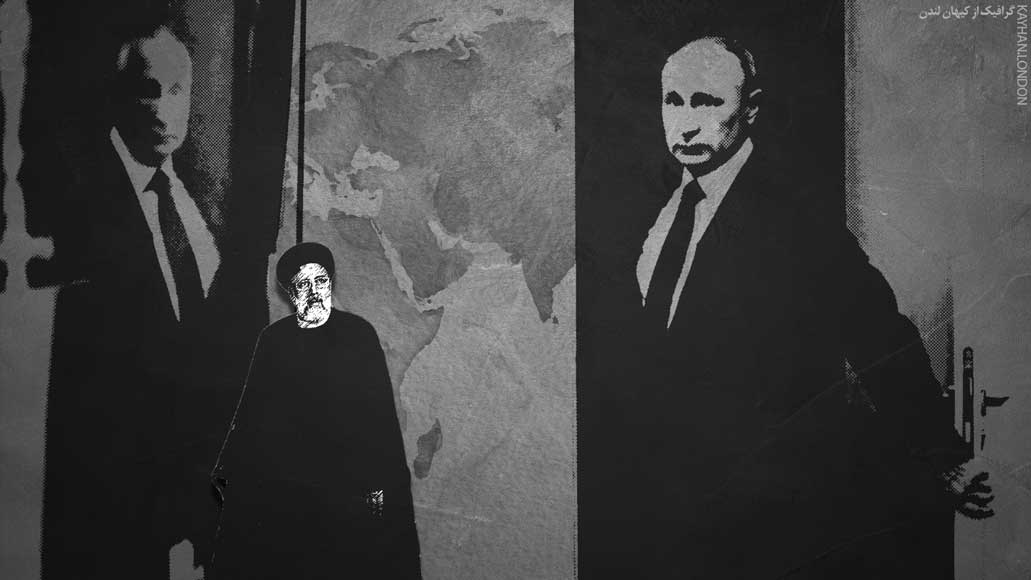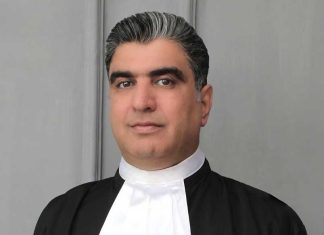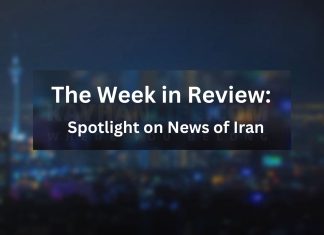By Kayhan Life Staff
Tehran and Moscow plan to sign a 20-year strategic agreement during Iranian President Ebrahim Raisi’s forthcoming official visit to Russia scheduled for early 2022, the Islamic Republic News Agency (IRNA) reported on Dec. 24.
Russian President Vladimir Putin has invited Mr. Raisi for an official visit in early 2022, during which the two leaders will reportedly sign a 20-year strategic agreement. Tehran and Moscow have reportedly agreed on a draft contract earlier this year, details of which have not been released to the media.
According to IRNA, the Russian state-owned TV Channel Zvezda — operating under the Russian Defense Ministry’s auspices — broadcast a documentary on Dec. 24 on Iran-Russia cooperation after the fall of the Soviet Union and the relationship between the two countries in the past three decades.
“Iran and Russia are completing the preliminary work for signing a 20-year strategic agreement,” IRNA said, citing the report by Zvezda. “The primary aim of the agreement is to increase cooperation between Tehran and Moscow in the fields of military, technology, and military technology.”
“Iran is justified in its efforts to strengthen its defense capabilities because the U.S. sells weapons to several countries in the Middle East and has a few military bases in the region,” the report added. “U.S. Navy ships patrol the Persian Gulf and Pentagon chief [U.S. Secretary of Defense Lloyd Austin] recently said that Washington would not end its military presence in the Persian Gulf. Iran has promoted the Shia Crescent, which includes Iran, Iraq, Syria, and Lebanon, to counter America’s expansionism in the region.”
The Shia Crescent has fallen under Iranian influence in the Middle East in recent years. It represents the increasing political influence of Shia Muslims in the region.
The Russian ambassador to Iran, Levan Dzhagaryan, recently said: “The Russian Federation is ready for a full military cooperation with Iran — within the framework of its international commitments to arms control.”
Following a telephone conversation with Mr. Putin in November, President Raisi said that Iran was eager to develop its economic and trade ties with Russia.
“We are ready to complete a comprehensive long-term cooperation agreement between Iran and Russia to strengthen our ties,” Raisi said afterward.
President Putin reportedly invited Raisi to visit Moscow during their phone meeting.
“Moscow supports Iran’s proposal for signing a long-term agreement on developing cooperation between the two countries and implementing it speedily,” Putin said.
During his visit to Moscow in March 2001, former Iranian President Mohammad Khatami (who was in office from 1997 to 2005) and President Putin signed an agreement on developing closer cooperation between the two nations, which passed with a majority of the votes in the sixth Majlis (Iranian Parliament) six months later.
Under the 2001 agreement, the signatories pledged to “develop their long-term and mutually beneficial cooperation to implement joint projects in areas of shipping, energy, nuclear energy for peaceful purposes, construction of nuclear power plants, industries, sciences, agriculture, and public health and hygiene.”
“The agreement will end in 10 years. Therefore, each party must give written notice to the other of its plan to cancel the contract one year before it expires; otherwise, it will renew every five years automatically,” the document said.
SPECIAL REPORT – Phantom Buyers in Russia, Advice From Iran Help Venezuela Skirt Sanctions
Iran’s ambassador to Moscow, Kazem Jalali, recently said: “The contract with China is a memorandum of understanding. The contract with Russia is an agreement which the Majlis must pass.”
Mr. Kazemi referenced the 25-year accord signed between Iran and China in March. However, it is still unclear if the agreement is a contract, a memorandum of understanding, or just a roadmap. Less than 48 hours after the agreement was formalized, some 120,000 people signed a petition on social media, protesting against “selling” Iran to China.
In an article titled “Russia’s Biggest Move Yet to Take Control of the European Gas Market,” published in the Nov. 15 issue of the OilPrice news website, Simon Watkins, a former senior foreign exchange (FX) trader and financial journalist, explained the implications of a 20-year deal between Iran and Russia which includes developing and mining the Chalous gas field in the Caspian Sea and water reservoirs in Iran’s north.
“A deal finalized last week to develop Iran’s multi-trillion-dollar new gas discovery, the Chalous field, will see Russian companies hold the major share in it, followed by Chinese companies,” the article said. “This is despite Chalous’s position unequivocally within the Iranian sector of the Caspian Sea, over which the Islamic Republic has complete sovereignty.”
“Billions of dollars in additional capital investment are scheduled to come from financial institutions in Germany, Austria, and Italy, as the indications are that the size of Chalous’s gas reserves is even greater now than initially thought,” the OilPrice article explained. “According to one of the senior Russian officials involved in negotiating the deal, ‘this is the final act of securing control over the European energy market.’”
“As it now stands — revealed exclusively to OilPrice.com — following further studies by Russia, the Chalous discovery is now seen as essentially a twin-field site, nine kilometers apart, with ‘Greater’ Chalous having 5.9 trillion cubic meters (Tcm) of gas in place, and ‘Lesser’ Chalous having 1.2 Tcm of gas, giving a combined figure of 7.1 Tcm of gas,” the OilPrice article noted. “The new Chalous figures would give Iran a total natural gas reserves figure of 40.9 Tcm, whilst Russia — or a long time, the holder of the largest gas reserves in the world — officially has just under 48 Tcm.”
“The new stake split in the combined Chalous twin-sites is as follows: Russia’s Gazprom and Transneft will together hold a 40 percent share, China’s National Petroleum Corporation (CNPC) and National Offshore Oil Corporation (CNOOC) together a 28 percent share, and the Khazar Exploration and Production Company (KEPCO) a 25 percent share only,” OilPrice added, quoting a source. “Gazprom will have overall responsibility for managing the Chalous development, Transneft will do the transportation and related operations, CNPC is doing a lot of the financing and providing the necessary banking facilities, and CNOOC will be doing the infrastructure parts and engineering.”
The OilPrice report points out that although KEPCO is named the Iranian party in the contract, the principal player in the deal is the IRGC and its engineering wing, Khatam al-Anbiya and other companies under its control.
Senior IRGC commanders argue that giving a significant share of these lucrative projects to Russia and China is vital for developing Iran’s ballistic missile program.






